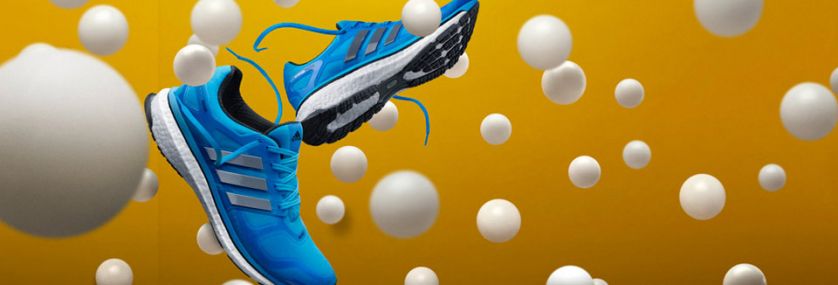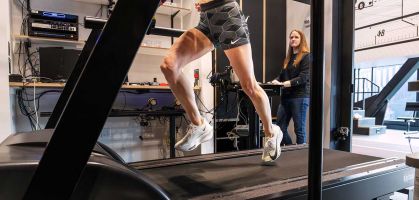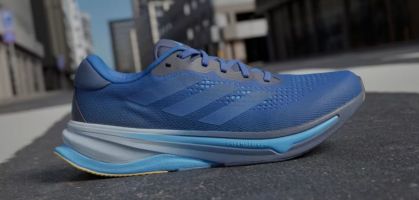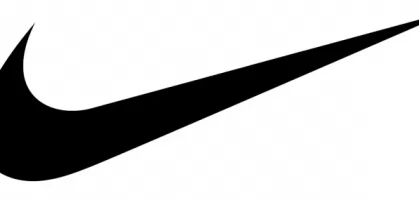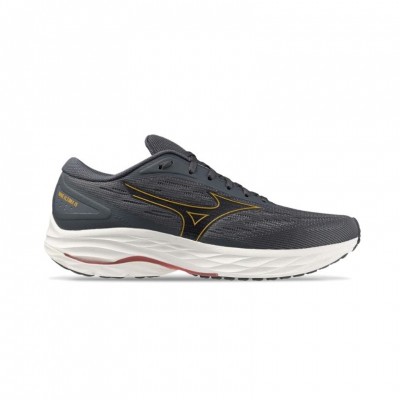More than a year ago in New York, Adidas running presented a technological innovation of spectacular performance for Running shoes: the Boost.
First introduced in a model of fashion aesthetics and minimalist concept such as the Energy boost, a year later we find it in a greater or lesser percentage in a large part of Adidas technical running models.

To give you some background, it was years of research and development by a group of engineers from the German petrochemical company BASF that led to the creation of a pre-expanded thermoplastic polyurethane, the first in the world to offer a closed-cell particle foam, which was marketed under the name Infinergy. Adidas developed the application of this granulated polyurethane (TPU) in close collaboration with BASF in order to introduce it into the midsole of running shoes with the aim of improving the way people run and thus setting a new standard for the material that will be used to make running shoes in the future.
Today we are going to find out whether these white Boost energy capsules are the "Holy Grail" for running shoe midsoles and from which Adidas will make a great profit over the next few years.
According to Martin Vallo of BASF's Polyurethanes for Sports Shoes division, Boost is light and elastic because it stretches like rubber, but its main feature is that it transforms energy thanks to the cellular structure of the capsules that make it up. Miles of beads composed of a granular material are responsible for the energy return individually and together, since they store the energy generated in the cushioning of the foot support on the ground to release it at the moment of take-off with an aid in the impulsion.
This argument is impressive for running enthusiasts, from the amateur to the professional we all want to use a technology that allows us to run better, more comfortable, with less risk of injury and more efficient, with less energy expenditure and less fatigue, let's see how much truth there is in all these benefits ...
What Adidas says and what we think is true....
1. The BOOST cushioning revolution gives you more energy return than other foam cushioning systems on the running market.
After impacting the foot on the ground in a soft and progressive way you notice a certain rebound effect resulting from the elasticity of the material, something that is perceived better and especially if you perform a progressive or a series at high speed. One of the main characteristics is its excellent recovery capacity after the initial compression, a concept known as "Resilience", which is due in part to the closed cell structure of each of the "balls" of the foam. It is in fact the most elastic particulate foam on the market. Elasticity tests to measure resilience ISO 8307 (ball rebound) and DIN 53512 (pendulum impact) show that the rebound height on the Boost can be as high as 55%. This result is significantly higher than other foam or rubber compounds used by competitors, which range from values of less than 20 % to 30 %.

2 . Comfort and responsiveness finally together Softness brings you comfort.
Responsiveness gives you firmness. Until now, Running shoes have been designed to offer either cushioning and comfort for training or responsiveness for competition. In a few milliseconds, while the foot is pressing on the material, it absorbs the kinetic energy generated and returns some of this energy to the runner. The Boost combines a soft, cushioned landing on the ground with efficient energy return, allowing you to enjoy a new running sensation. The outsole is made up of some 2,500 small pellets and looks really eye-catching. It was voted "Best Technology First last year" by the press and Runner's World magazine called era Energy Boost the best running shoe the industry has to offer, outperforming any of the 800 other shoes we've tested.
3. More comfort in every stride
The Boost enables a soft landing with efficient energy return that allows you to feel and enjoy running in a special way.
Until now era very common to have to decide whether to buy a cushioned, reactive or motion control shoe, now you don't have to give up any of them when you can enjoy all three features. Runnea was at the presentation of the new ones in Zaragoza at the beginning of June; we are currently testing this model of which I can tell you the title "The 7 wonder with Boost from Adidas". I can attest that stability, comfort and reactivity can finally be combined in the same model.
4. In freezing cold or scorching heat, every step you take will be as comfortable as the first.
According to Gerd Manz, Director of Innovation at Adidas, the Boost maintains its consistency at all temperatures between -20°C and 40°C, without softening in extreme heat or hardening in severe cold, which is the case with traditional EVA midsoles.
Cushioning capacity and energy return are not impaired by weather conditions. Adidas shoes can be used at any time of the year, whether in winter or summer, without noticing any change in their properties.
5. Lightweight and the cushioning revolution

BOOST in the midsole with a white color provides a higher energy return than other foam cushioning systems on the running market.
To produce Boost, Elastollan®, the well-known
thermoplastic polyurethane from BASF, is expanded in a process that maintains the advantages of polyurethane while adding the typical properties of foams.
As foam particles, it has a perfect density to lightness ratio, absorbs little water and has a high abrasion resistance.
In tests at the biomechanics laboratory in Germany, Adidas product developers subjected athletes wearing Running shoes with and without Boost to stress tests to assess the influence of this technological innovation on the athletes' performance. Maximal oxygen uptake (VO2max) and running speed were assessed, and the comfort and the feeling of "energy return support" from the Boost was found to improve performance. This possible placebo may be influenced by the fact that the technology is visible in the design, in some models its presence is highlighted with a yellow line that runs through the white material to highlight its structure.
Placebo effect or technological efficiency? Marathon runners such as Patrick Bakau or Dennis Kimetto achieved records in marathons in different cities wearing Boost shoes.
6. Longer duration

Boost is supposed to last month after month and season after season. Its longer durability is estimated to be around twice the time or mileage compared to the performance life of conventional materials used in the midsole. It does not lose its excellent resilience even under continuous load. This was proven with fatigue tests using dynamic loads at a constant pressure of 250 kilo Pascals; performance is 75% better than other materials.
After 40,000 load cycles, the thickness of the Boost remained close to the initial thickness, certifying that it returns virtually the same energy when new as when retired. These tests showed that Boost technology is superior in many respects to traditional ethylene vinyl acetate (EVA) cushioning systems.
According to BASF data, "there is no other material on the market that generates higher energy return."
In Brief:
Since its introduction on the market last year until this spring I had heard several times about the Boost, I had read technical arguments about its performance, especially its cushioning capacity, and on some occasions I had even been asked to test this technology to confirm these claims.
I always like to back up my contributions with data from scientific studies and make my own opinion during the testing of shoe models in different demanding situations; on the subject of Boost I have taken into account the opinions for and against the use of cushioning performance in running shoes.
Several studies have investigated whether the cushioning properties of running shoes have a positive effect on running economy or are detrimental. In all of them, there is a consensus in the sensations reported by athletes regarding greater comfort, more pleasant sensations, which means that they allow them to enjoy running more.
I have always been an advocate of applying the necessary technology in shoes to optimize each of the strides, that athletes can take advantage of the virtues of advances in science and product development to make running easier, especially by reducing the impact of the foot against the ground. If this technology is also able to assist in propulsion and thus improve running economy and positively affect performance, I welcome it.
More and more running enthusiasts appreciate the technology and performance offered by running shoes, I am one of them; I am also one of those who have tried the Adidas Boost and I am convinced that it is a true innovation in the running shoe industry. Once you run with Boost technology and with this I corroborate the opinion of millions of fans around the world "it's hard to want to do without it".
There is a study from the Human Performance Lab at the University of Calgary recently published on the web regarding the performance of Boost that I would like to comment on:
Cushioning Properties in the running shoe in terms of softness and reactivity improve running economy *.
The purpose of this study was to analyze the effects of the cushioning and energy return properties of the shoe midsole on running economy.
- Methods: The study consisted of two separate tests, one using a fixed metabolic analysis system measuring heart rate, lactic acid and gas analysis (CO2 emission and O2 consumption) to quantify the parameters during treadmill running, and the other using a portable metabolic analysis system to measure oxygen consumption during natural running. Twelve endurance athletes participated in each of the experiments. The shoes used were 2 distinct models, one with more cushioning typical of training and the other with much less cushioning (minimal). The shoes were identical in structure with the only differences being the material used in the midsole in terms of its absorption capacity and energy return.
- Results: Both on the treadmill and in motion the more cushioned and reactive shoes resulted in a statistically significant decrease in oxygen consumption compared to the minimal shoes. On the treadmill 10 of the 12 athletes consumed less oxygen while wearing cushioned and reactive shoes with a mean decrease across all subjects of 1.0%. In the above ground experiment 9 of the 12 subjects also consumed less oxygen with an average decrease of 12.
- Conclusion: Shoes with softer and more reactive soles positively influence running economy by 1.0%.
My point of view...
I predict a very promising future for it, more so than the Air system or the Gel from the direct competition. I would dare to say that in the next few years Adidas is going to be at the honor of the running market if we analyze the increase in sales of the German brand after the launch of the Boost models last summer.
Using a material that allows better shock absorption and helps propulsion is a technological innovation that can be very profitable, as its performance results in safer running and less fatigue.
The athlete who tries Boost technology in the store decides to buy Adidas and enjoys his shoes in each of his workouts, recommends them to his friends, and the most interesting thing for Adidas is that he manages to gain the loyalty of a new customer "who will never want to run again in shoes with traditional midsoles".
Sources
*Softer and more resilient running shoe cushioning properties enhance running economy. Jay Worobets, John William Wannop, Elias Tomaras & Darren Stefanyshyn . University of Calgary, Human Performance Lab, Faculty of Kinesiology Calgary (Canada) Footwear Science Published online: 17 Jun 2014
- www.infinergy.basf.com
- www.basf.com
- www.basf.de/plastics/pressreleases
- www.basf.com/pressphoto-database
- www.adidas.com
Read more news about: Running News
